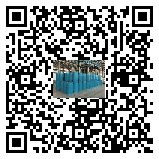Six major agricultural application advantages of agricultural surfactants
In the microscopic world where pesticide sprays come into contact with crops, agricultural surfactants
are playing a key role as "efficiency catalysts". These seemingly simple chemical adjuvants are triggering
a chain reaction of agricultural efficiency enhancement by changing the surface tension and interfacial
properties of liquids. The following are the six core advantages they demonstrate in modern agriculture:
1. Efficacy enhancement: the key to breaking the "contact barrier"
Traditional pesticide droplets often form a "water droplet marathon" on the surface of leaves, evaporating
and losing before penetration. Surfactants solve the problem through a triple mechanism:
Superwetting effect: non-ionic surfactants reduce the contact angle from 120° to 30°, and the liquid spreads like a film.
Experiments show that the absorption of herbicides increases by 65% after adding wetting agents.
Electrostatic adhesion: cationic surfactants generate molecular anchors with negatively charged leaves, and the ability to
resist rain erosion is enhanced by 70%.
Penetration promotion: Siloxane spreading agents penetrate the stomatal channels, increasing the concentration of insecticides
in leaf tissue by 40%.
2. Reduce the amount and increase the efficiency: the "economic lever" of green agriculture
By optimizing the combination of pesticides and machinery, surfactants can reduce the amount of pesticides by 30% while
maintaining the prevention effect. Actual cases show:
The amount of herbicides in rice fields has been reduced by 40%, and the weed prevention effect has reached 92%
The per-acre cost of fruit tree insecticides has been reduced by 35%, and the insect population reduction rate has increased by 55%
This "less use of pesticides and more effectiveness" model can save my country about 80,000 tons of pesticide formulations each year.
3. Precision attachment: the "navigation assistant" of smart agriculture
In the era of flying defense, surfactants show the advantages of precise control:
Anti-drift technology: polyacrylate anti-drift agents increase the droplet deposition rate from 65% to 90%, reducing non-target pollution
Directed release: pH-sensitive emulsifiers disintegrate in the acidic environment of the pest intestine, increasing the utilization rate of the
agent by 60% Data from drone operations in a tea garden show that the effective utilization area of pesticides has expanded by 4 times
after the use of synergists
4. Environmental friendliness: the "green promoter" of sustainable development
The new surfactant system is rewriting the ecological equation of pesticides:
Biodegradation: Rhamnolipid biosurfactants accelerate pesticide degradation and shorten the half-life in soil by 50%
Directed deposition: Nanocarriers combined with targeted surfactants reduce the vertical migration of pesticides in soil by 80%
Experiments show that the use of environmentally friendly enhancers can reduce the amount of pesticide residues in water by 75%.
5. Formulation innovation: the "universal formula" for pesticide research and development
From seed treatment to nanopesticides, surfactants are expanding the boundaries of formulations:
Seed coating film formation: Polyvinyl alcohol film-forming agents increase seed germination rate by 25% and extend the underground
pest control period by 60 days
Nano dispersion: Anionic dispersants stabilize nanoparticles, making the suspension stability of the agent reach 98%, and the efficacy
period is extended by 3 times
A nanopesticide developed by a certain company, after adding specific surfactants, reduces the per-acre dosage by 50% and
remains highly effective.
6. Equipment Adaptation: "Efficiency Partner" of Modern Agricultural Machinery
Facing different application scenarios, surfactants show intelligent adaptability:
Electrostatic spray: Adding charge enhancers to charge the droplets, increasing the amount of deposition on the back of the leaves
by 40%
Variable fertilization: Intelligent responsive surfactants can adjust the release rate according to crop needs
A smart irrigation system with slow-release surfactants increases the fertilizer utilization rate from 30% to 55%
Conclusion: The "Invisible Revolution" of Modern Agriculture
From the microscopic interface to the macroscopic farmland, agricultural surfactants are triggering a "silent agricultural revolution".
They not only make every drop of pesticide precise, but also promote agricultural production to evolve in the sustainable direction of
"less input, high output, and low pollution". With the development of smart agricultural technology, these molecular assistants will continue
to unlock the potential of crops and provide dual guarantees for food security and ecological harmony. When farmers press the sprayer
in the field, perhaps it is these invisible "chemical commanders" who are quietly writing a new chapter in modern agriculture.


